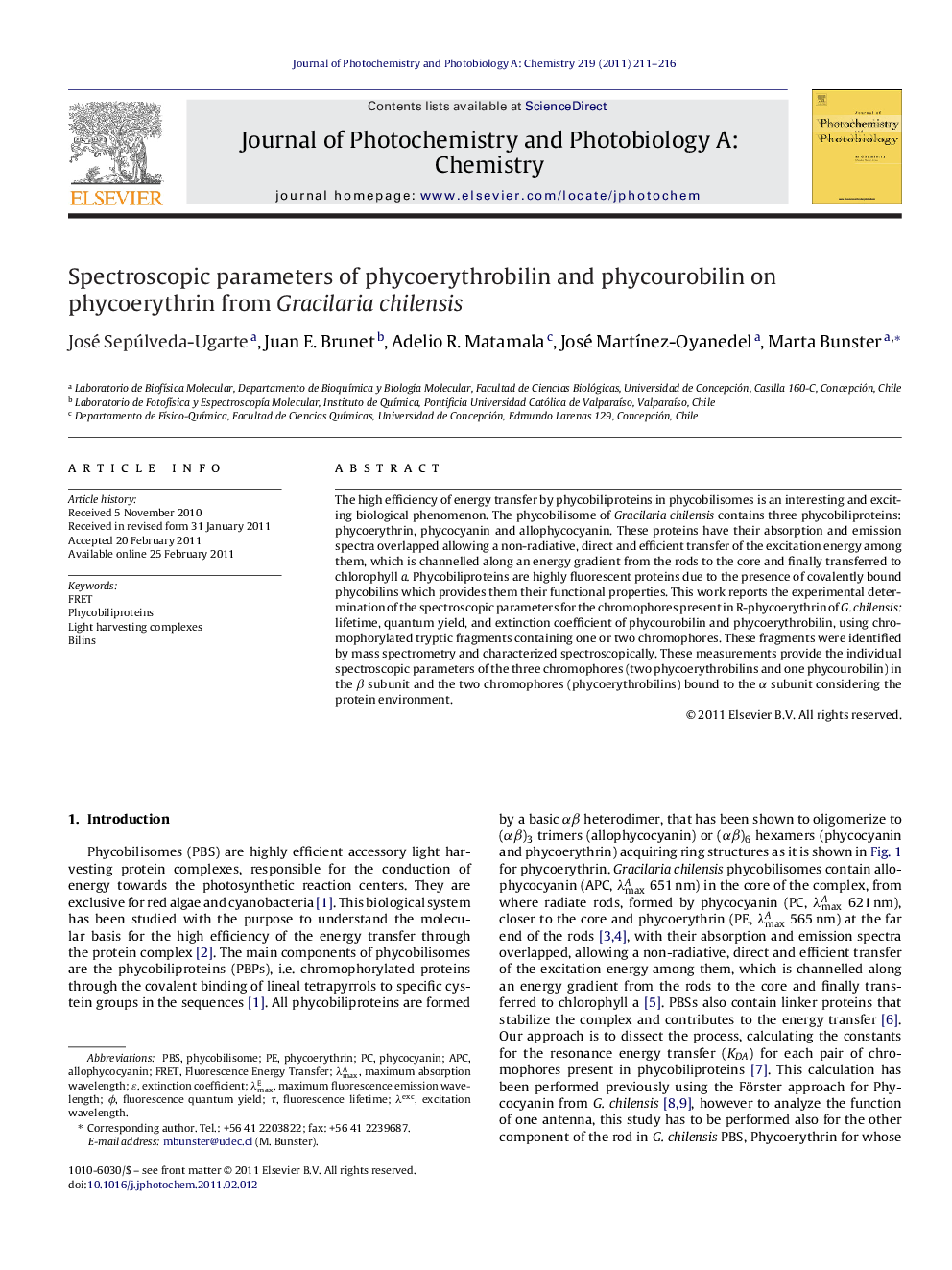| Article ID | Journal | Published Year | Pages | File Type |
|---|---|---|---|---|
| 27461 | Journal of Photochemistry and Photobiology A: Chemistry | 2011 | 6 Pages |
The high efficiency of energy transfer by phycobiliproteins in phycobilisomes is an interesting and exciting biological phenomenon. The phycobilisome of Gracilaria chilensis contains three phycobiliproteins: phycoerythrin, phycocyanin and allophycocyanin. These proteins have their absorption and emission spectra overlapped allowing a non-radiative, direct and efficient transfer of the excitation energy among them, which is channelled along an energy gradient from the rods to the core and finally transferred to chlorophyll a. Phycobiliproteins are highly fluorescent proteins due to the presence of covalently bound phycobilins which provides them their functional properties. This work reports the experimental determination of the spectroscopic parameters for the chromophores present in R-phycoerythrin of G. chilensis: lifetime, quantum yield, and extinction coefficient of phycourobilin and phycoerythrobilin, using chromophorylated tryptic fragments containing one or two chromophores. These fragments were identified by mass spectrometry and characterized spectroscopically. These measurements provide the individual spectroscopic parameters of the three chromophores (two phycoerythrobilins and one phycourobilin) in the β subunit and the two chromophores (phycoerythrobilins) bound to the α subunit considering the protein environment.
Research highlights► The spectroscopic parameters of phycourobilin and phycoerythrobilin on phycoerythrin were determined. Tryptic chromophorylated fragments of the protein were used to simulate the protein environment and avoid interference with other chromophores in the molecule.
